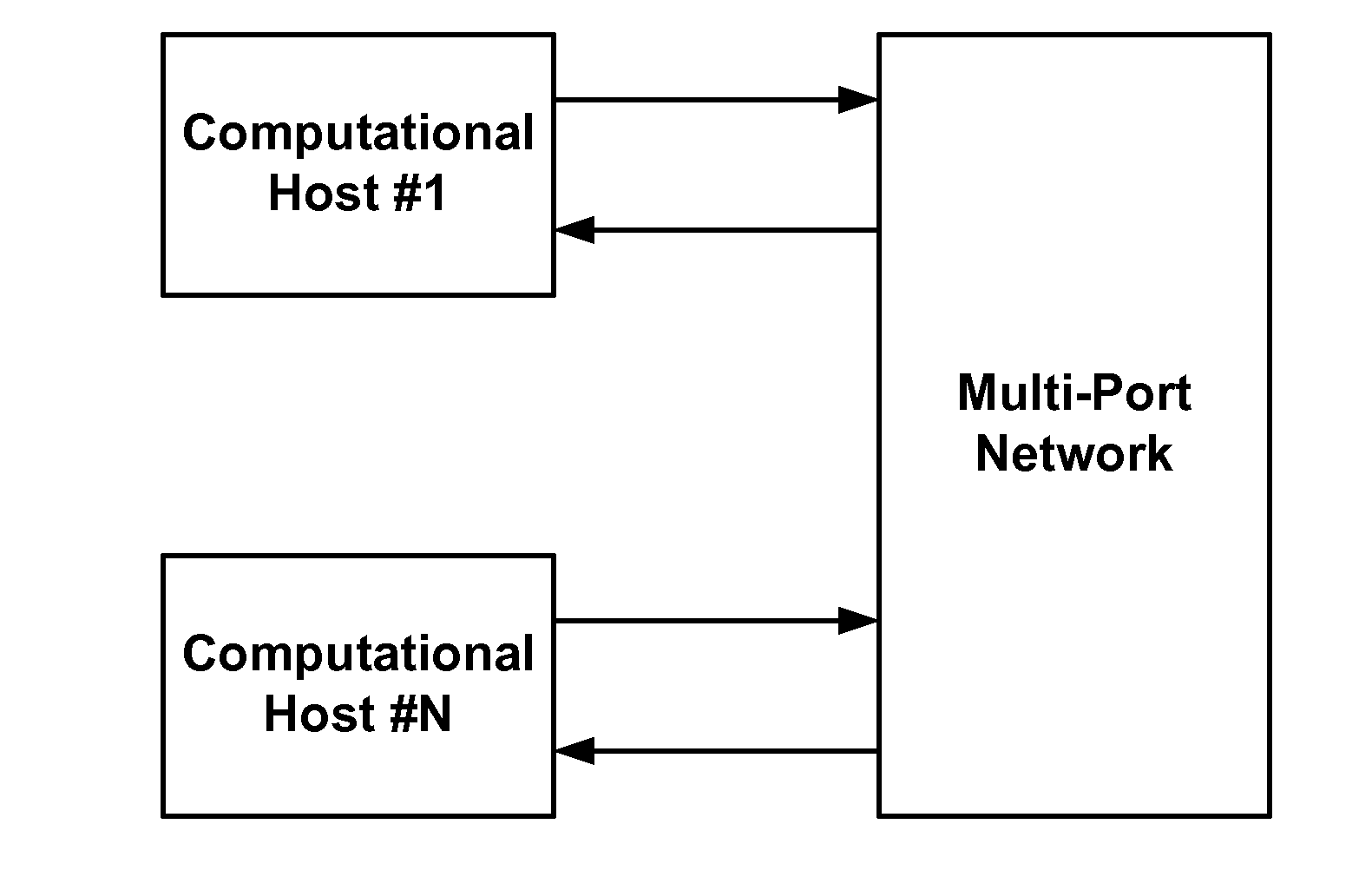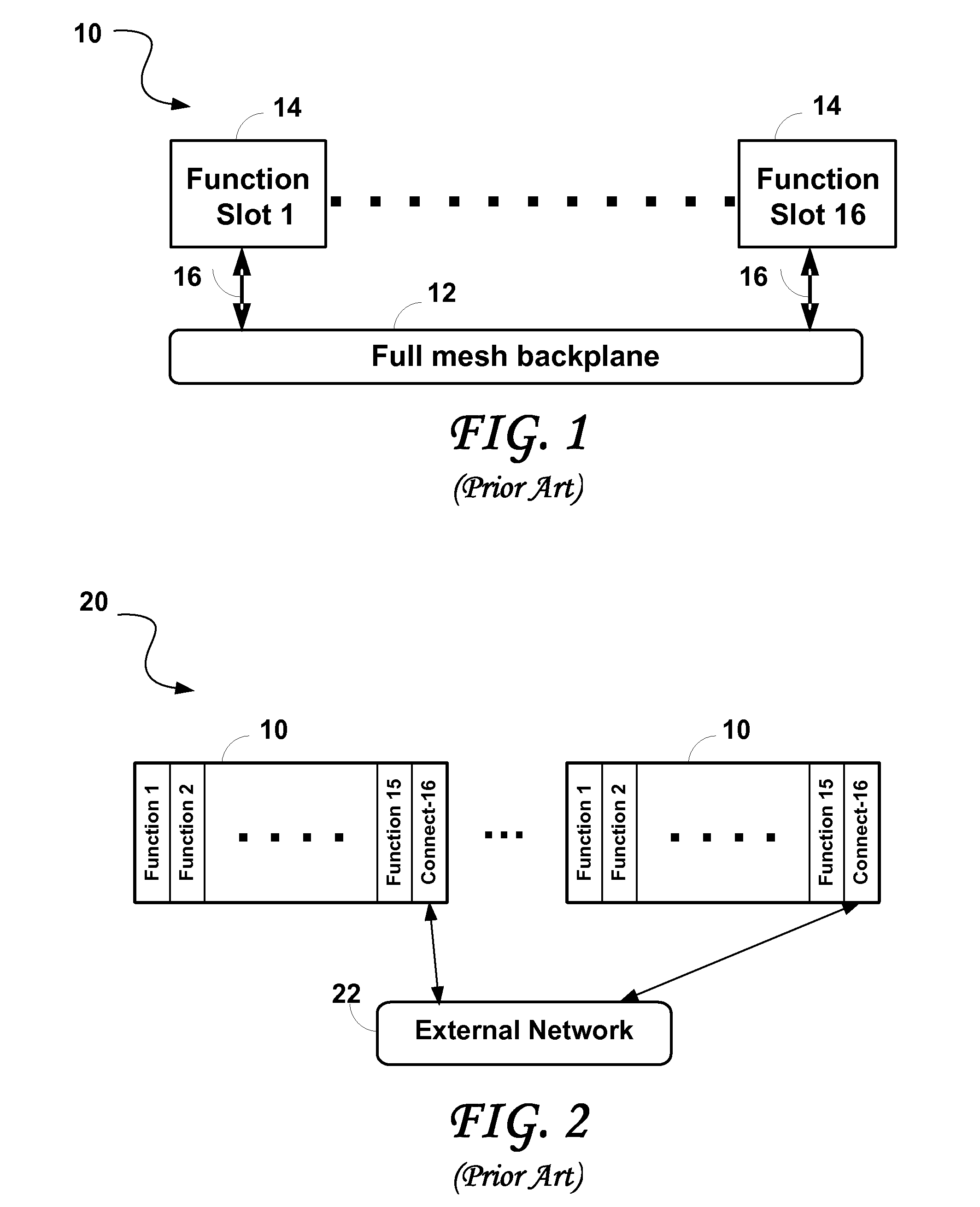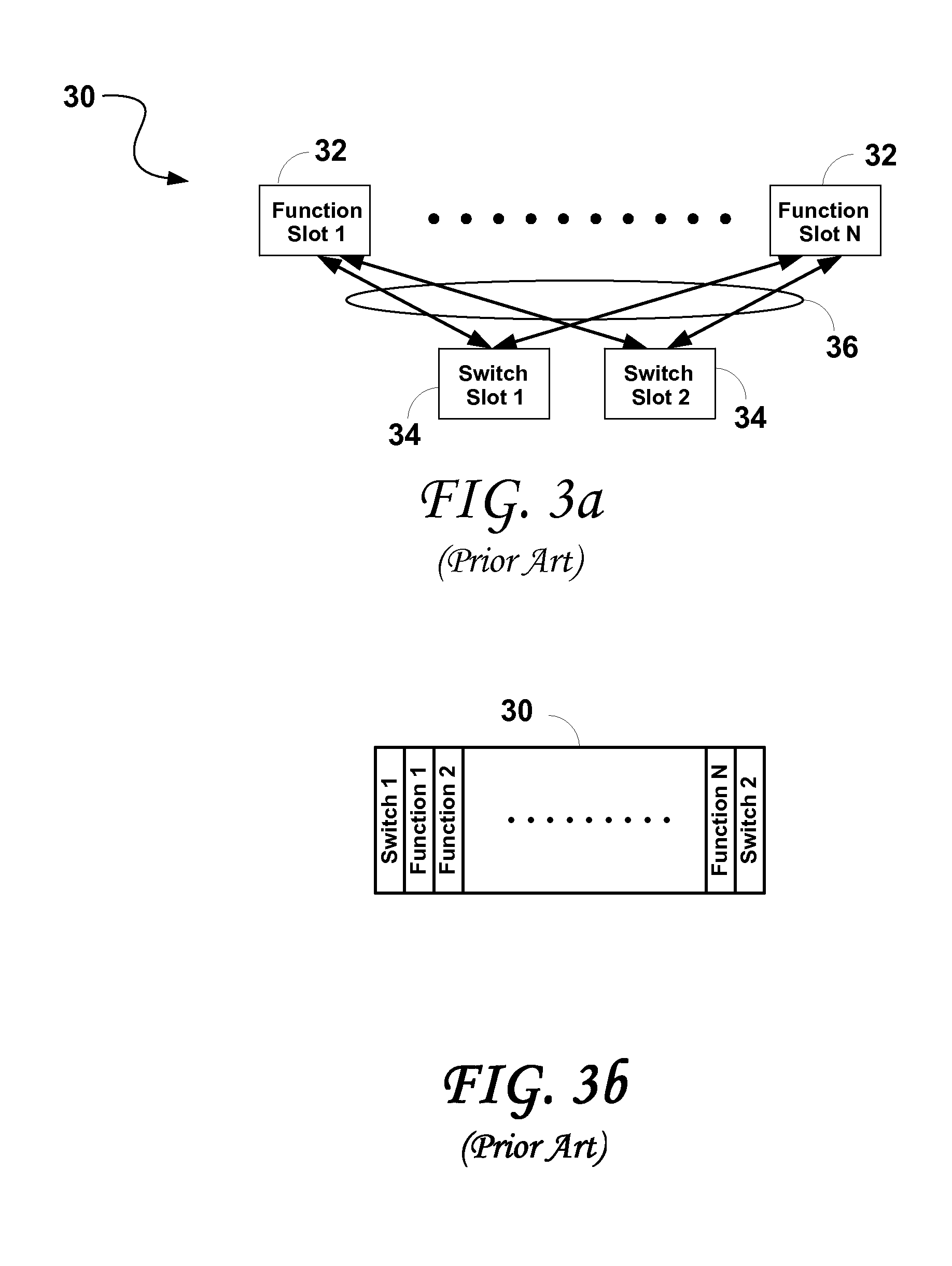Methods and systems for scalable interconnect
- Summary
- Abstract
- Description
- Claims
- Application Information
AI Technical Summary
Benefits of technology
Problems solved by technology
Method used
Image
Examples
exemplary embodiment i
[0065] The connectivity system within the chassis, according to an embodiment of the present invention, may be based upon a midplane design. The midplane connectivity is shown in FIG. 11, illustrating a midplane based chassis 110, comprising a midplane 112 having a front and a rear face, and being divided into an upper and a lower section. The midplane supports, for example, 30 function slots 72 (Function Slot #1 to Function Slot #30), divided into three groups (114, 116, and 118) of 10 function slots each, accessing the upper front, upper rear, and lower rear sections of the midplane 112 respectively; and 10 interconnect slots 74. The function slots 72 and the interconnect slots 74 may be accessed from the midplane 112 via high performance electrical connectors 120 through links 122. The function slots 72 may be utilized to house a variety of functions (function modules) that support communications, computing and / or any other specialized application. For example, the 20 function sl...
PUM
 Login to View More
Login to View More Abstract
Description
Claims
Application Information
 Login to View More
Login to View More - R&D
- Intellectual Property
- Life Sciences
- Materials
- Tech Scout
- Unparalleled Data Quality
- Higher Quality Content
- 60% Fewer Hallucinations
Browse by: Latest US Patents, China's latest patents, Technical Efficacy Thesaurus, Application Domain, Technology Topic, Popular Technical Reports.
© 2025 PatSnap. All rights reserved.Legal|Privacy policy|Modern Slavery Act Transparency Statement|Sitemap|About US| Contact US: help@patsnap.com



